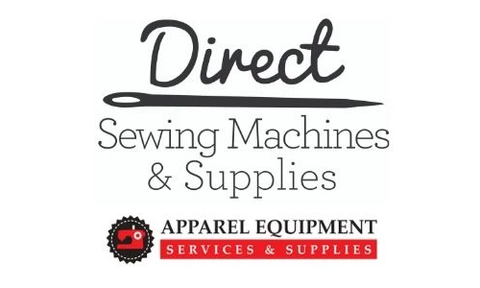When to Use a Walking Foot on Your Sewing Machine – Complete NZ Guide

If you’ve ever sewn multiple layers and noticed the fabric shifting or bunching, you’ve probably wished for a little extra grip. That’s exactly what a walking foot provides. It’s one of the most useful sewing accessories you can own — and once you understand how and when to use it, you’ll wonder how you ever sewed without one.
This guide explains what a walking foot does, when to use it, how to install it, and which projects benefit most. It’s written for sewists in New Zealand using domestic brands like Singer, Janome, Brother, Elna, and Juki.
What Is a Walking Foot?
A walking foot (also called an even-feed foot) is a presser foot with its own set of feed dogs that move in sync with your machine’s feed system. While your sewing machine’s lower feed dogs pull the fabric from underneath, the walking foot grips and moves the top layer at the same time.
This even feeding action helps prevent puckering, stretching, and misaligned seams — especially on slippery or thick fabrics.
When Should You Use a Walking Foot?
A walking foot is perfect whenever your project involves layers, heavy fabrics, or tricky textures. Common examples include:
-
Quilting – Keeps top, batting, and backing layers feeding evenly.
-
Bag making – Prevents vinyl, canvas, or interfacing from shifting.
-
Sewing knits and stretch fabrics – Reduces stretching and wave effects.
-
Matching prints or plaids – Keeps patterns perfectly aligned.
-
Leather, vinyl, or laminated fabrics – Prevents sticking under the presser foot.
-
Topstitching long seams – Ensures consistent stitch length and fabric feed.
If you regularly sew thicker or layered materials, a walking foot is a must-have attachment.
How to Install a Walking Foot
Installing a walking foot is simple once you’ve done it a couple of times:
-
Turn off your machine and raise the presser foot lever.
-
Remove the existing foot and holder.
-
Slide the walking foot onto the presser bar and align the forked arm over the needle clamp screw.
-
Tighten the screw securely.
-
Lower the presser foot and turn the handwheel to check that the walking foot moves up and down smoothly.
-
Test sew on scrap fabric before starting your main project.
Troubleshooting Tips
If you experience skipped stitches, uneven feed, or noise while using a walking foot, check the following:
-
Ensure the forked arm is correctly positioned on the needle bar.
-
Clean lint and dust around the feed area.
-
Reduce presser foot pressure if the fabric is thick.
-
Use the correct needle and thread weight for the material.
-
Always sew at moderate speed — walking feet work best with steady, even stitching.
Machine Compatibility in New Zealand
Walking feet come in different fittings: low-shank, high-shank, and slant-shank for domestic machines, plus industrialversions.
Before buying, check your sewing machine model or manual.
At Direct Sewing Machines NZ, we stock walking feet compatible with Singer, Brother, Juki, Janome, Elna, Pfaff, and Jack domestic and industrial machines.
If you’re unsure which foot suits your model, contact us and we’ll match the correct one.
Related Reading
For those with the Singer Heavy Duty 4452, which includes a walking foot in the box, we recommend reading:
Singer Heavy Duty Sewing Machines NZ Guide – 4411 vs 4423 vs 4432 vs 4452
Also explore:
Top 10 Must-Have Sewing Accessories Under $50 — perfect companion tools to make your sewing easier and more accurate.
FAQ: Walking Foot Questions Answered
Q1: What exactly does a walking foot do?
It feeds the top and bottom layers of fabric evenly, helping to prevent puckering, shifting, or stretching. It’s ideal for layered or slippery materials.
Q2: Can I use a walking foot for all fabrics?
Not always. It’s best for medium to heavy or layered fabrics. For fine or delicate fabrics like chiffon or silk, a standard presser foot gives better control.
Q3: Can I sew zigzag or decorative stitches with a walking foot?
Most walking feet are designed for straight stitching. Some allow a narrow zigzag, but avoid wide decorative stitches unless your walking foot specifically supports them.
Q4: Why is my walking foot making noise or skipping stitches?
This usually happens if it’s not aligned correctly, or the fork arm isn’t seated on the needle bar. Reinstall, check needle type, and slow down your speed.
Q5: How do I clean and maintain my walking foot?
Brush out lint and threads after use, wipe metal areas clean, and occasionally oil the hinge or feed mechanism if recommended by the manufacturer. Store it in a dry place.
Q6: Can a walking foot replace an industrial walking-foot machine?
No — it’s a great add-on for domestic sewing machines, but it won’t match the feed power of a dedicated industrial walking-foot machine. For frequent heavy-duty work (like upholstery or canvas), an industrial model is a better investment.
Q7: Do all walking feet fit all machines?
No. Walking feet differ by shank type and brand. Always check compatibility — or get in touch with Direct Sewing Machines for the correct fit for your model.
Final Thoughts
A walking foot is one of those small accessories that makes a big difference. Whether you’re quilting, bag-making, or sewing tricky fabrics, it helps you achieve cleaner, more professional results with less frustration.
Explore our range of walking feet and accessories on Direct Sewing NZ and upgrade your sewing setup with confidence.


